We began our tenth day with a feast. Chris had been busy all morning whipping up a huge batch of mandazi, triangular pockets of fried pastry which taste of sugary warmth and are best eaten by the bucketload. The supply seemed to be limitless, and Chris showed no sign of letting up.
“Eat,” he exhorted us, “more as you can.”
I protested that I was too full, but he was having none of it.
“More, as you can.”
And so I ate.
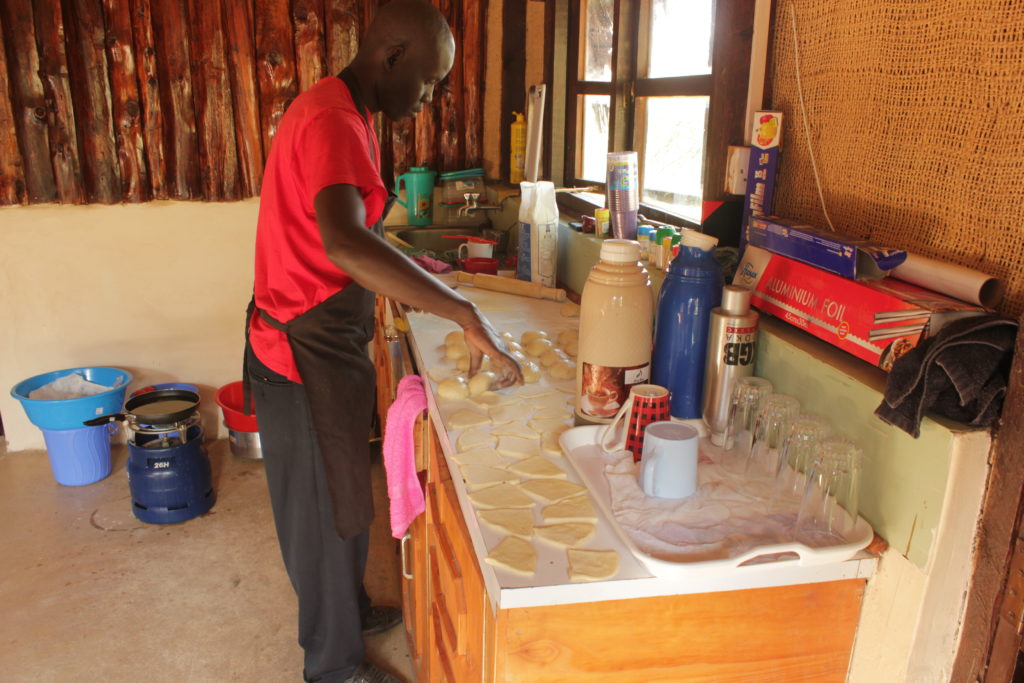
While we lay around the hut in a bloated stupor, Enoch briefed us on the plan for the day ahead. We were to meet a man by the name of Michael Mbithi, who by all accounts was something of a big deal. Michael, as we discovered, is one of the most senior human-wildlife coexistence consultants in East Africa, and has been involved in the refinement and distribution of lion lights since their infancy seven years ago. He also has a huge ranch full of cheetahs, which we had been told we might visit later in the day. To begin with, he was going to show us how lion lights worked by taking us to a boma where one of the original versions was installed, and guide us through the process of putting up some new ones.
In person, Michael was quite a character, with a gravelly voice and a dry sense of humour to match. He spoke with authority and charm, slipping freely between weighty scientific discussion and jovial small talk. At the boma, he tasked us with looking around for ten minutes and deciding ourselves where we thought the best locations for new lion lights would be. On the whole, he seemed pleased with our suggestions, although he emphasized the importance of putting the lights within the perimeter fence rather than on the outside. If the animals can get too close to the lion lights, the element of mystery is lost, and they begin to acclimatize. There is an additional benefit to be gained from having lion lights within the confines of a boma, as they can help residents avoid scorpions and snakes while walking around at night.
The lion light itself is a compact, sturdy bit of kit, with solar panels attached and a light that flashes in a series of changing patterns to prevent wildlife from getting desensitized. As I secured the light against a wooden post and started to hammer a nail into place, I was struck by how much difference such a small and simple piece of technology could make. When we conducted our interviews, we noticed a significant amount of variation in prosperity and optimism between those households which had lion lights, and those which did not, yet the price of each one is a mere 2000 KSh (less than 20 pounds). Though this represents a substantial investment for the average Maasai pastoralist, the costs should be swiftly recouped in terms of the attacks prevented and cattle saved.
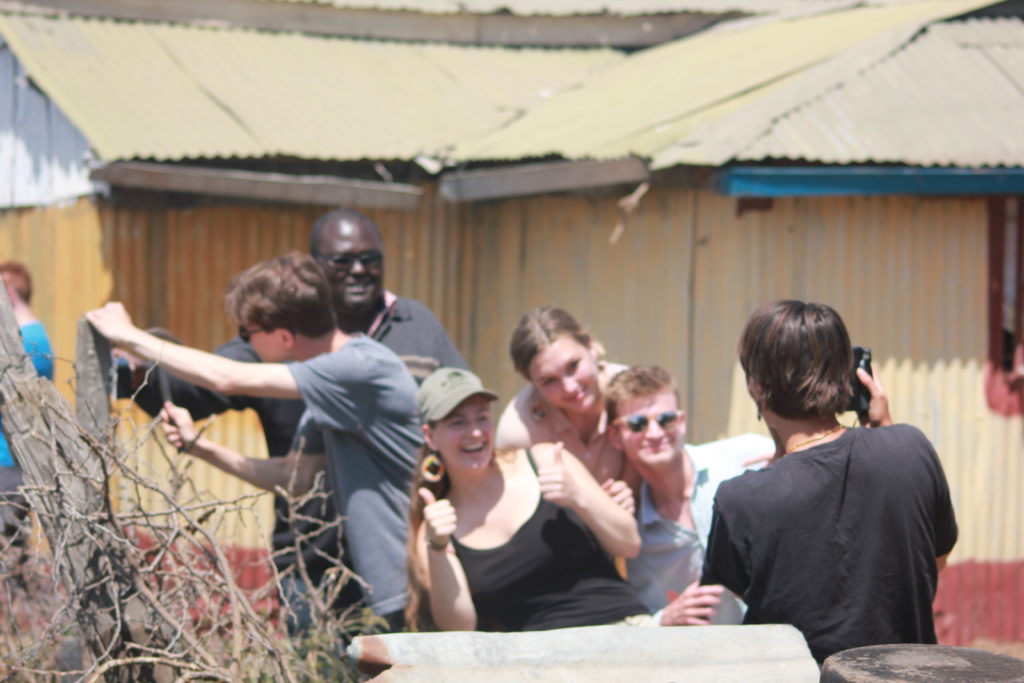
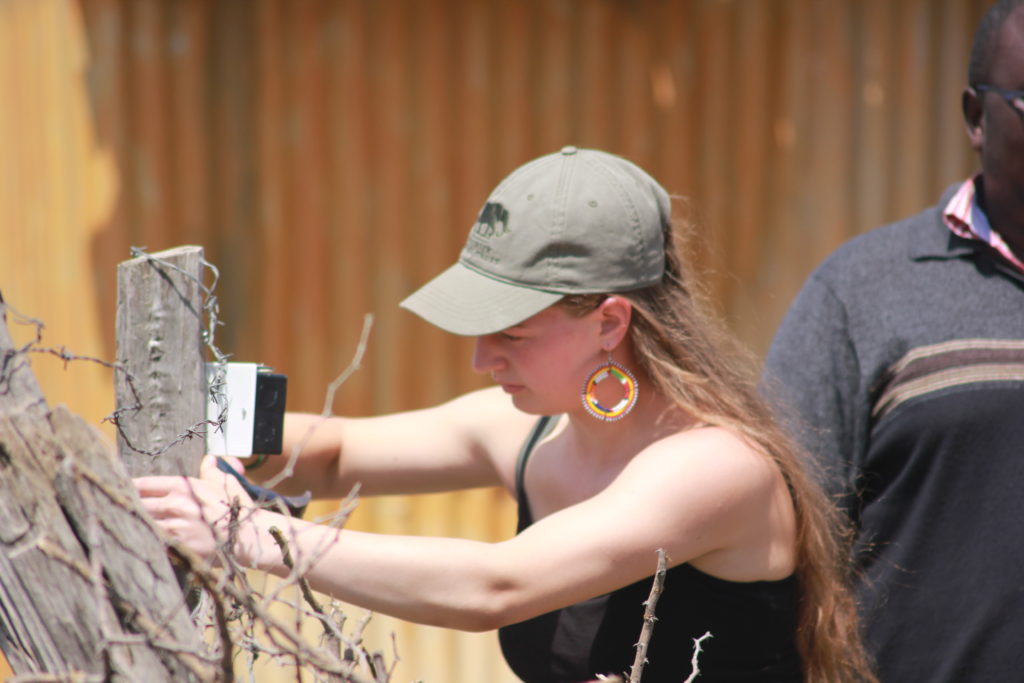
Once the lion lights were all installed, Michael announced that he had taken a liking to us and we were going to go for a drive to see his ranch. Our journey first took us through the backstreets of Kitengela, where you can find every shop imaginable, their colourful names proudly painted on by hand. Along the way we passed ‘Decent Cabs’, ‘Glory Land’, ‘Mama Joy’s Salon’, ‘Remedy Business Season 2’, and my personal favourite, ‘Sacred Wholesale and Retail / Sacred Hardware – The Blessed Work of My Hands’. One particularly enterprising establishment offered the combined services of hotel, butchery, and ‘modern welding’; when we passed it again a few days later, the owner had added the slightly concerning ‘scalping ventures’ to the selection (not as sinister as it sounds, I’m told – something to do with trading).
With the hubbub of Kitengela behind us, we went off-road to take the scenic route, and as we drove Michael talked to us about land use and the challenges for conservation.
“Here in Kenya,” he explained, “there is a culture such that if you don’t own land, you are a nobody.”
The result is that land which would be ideal for conservation gets bought up very quickly by smallholders, for cattle grazing or just as property. We passed through a vast limestone quarry, now used for making cement, which was once prime cheetah territory until tracts of land were purchased for human use. Even more problematic is the Nairobi-Mombasa highway, which cuts through protected land and causes all manner of disturbances. The only animal we saw for a while was a lone rock hyrax, bounding across the road and disappearing into the dust as quickly as we spotted it.
As we neared our destination, the landscape seemed to come alive, with wildebeest, gazelles, giraffes and ostriches emerging from the dusty plains to greet us. At one point we were met with a visual gag that was almost too obvious to be funny, as we stopped the car for a zebra crossing the road. I know, I know, the temptation was just too strong. Michael explained that the change in our surroundings could be attested to the differences in land use – here, we were driving past privately owned ranches where conservation was given more of a priority treatment. These were sizeable tracts of land, in the order of tens of thousands of acres, allowing their animal residents sufficient space to live and move around.
We stopped for a quick toilet break at Stoni Athi Resort, a hotel so luxurious that it was almost jarring, given the rather more homely conditions we had cheerfully been living with thus far. As we entered the lobby we were greeted with chandeliers, flat screen TVs, and a portrait of President Uhuru Kenyatta gazing benevolently down at us. By some odd quirk of coincidence, Stoni Athi Resort had its own tame gazelle too, this one called Tony rather than Tommy (a slightly more imaginative departure from the Thomson for which the species was originally named). Michael, ever the attentive host, decided we should all have a drink and linger for a short while, a suggestion that was met with minimal resistance. As I sat by the pool, sipping an ice cold Tusker beer and watching Tony frolic in the afternoon sun, I allowed myself to luxuriate for a moment in what was probably quite an unearned break. Apparently, conservation work does have its perks.


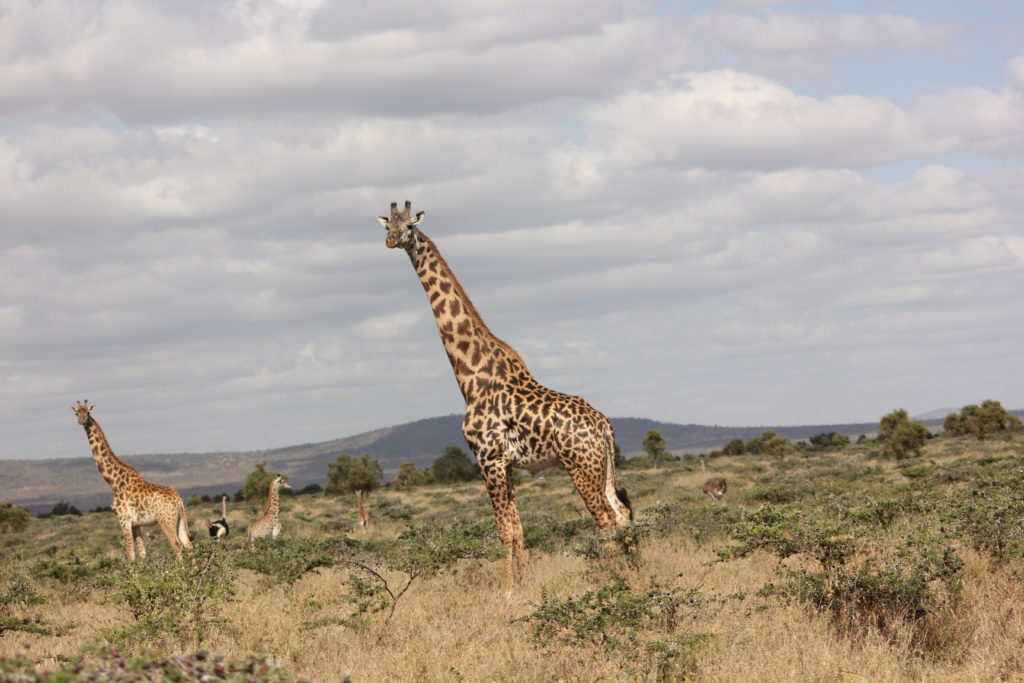
Fortunately, if our idling had made us feel at all guilty, Michael had just the thing to snap us out of it – the time had come to plant some trees. After giving us a brief tour of his ranch, he led us into a garden where several crates full of acacia seedlings lay in wait. We hauled them into wheelbarrows, taking care not to damage the loose roots or prick ourselves on the many thorns that studded their spindly branches. With the wheelbarrows loaded up, we carted our precious cargo over to a big field behind Michael’s house, and got to work. The first task was to place the seedlings at regular intervals in a grid formation, so that they could cover as broad an area as possible without being too dispersed. We were then given a selection of rather dubious looking tools, some of which were assembled before our eyes in a process that involved a lot of whacking.
Digging holes for the trees proved to be something of a challenge, as the elements conspired to thwart us at every turn. The soil was dense and dry, an inevitable consequence of little rainfall and lots of sun. The aforementioned sun was beating down relentlessly in a late afternoon surge, and before long we were doused in sweat and craving water. When water finally arrived, it wasn’t even for us – trees first, the humans can wait. To make matters worse, our hoes kept breaking. After repeatedly hacking away at the stony soil, eventually the hoe would give up and its head would quite literally make a break for it, as the wood splintered and the whole thing fell apart. The solution, apparently, was to shove the head back on, and wedge in a few more chips of wood if the fit seemed too lose. Unsurprisingly, these makeshift contraptions were not long for this world, and shortly disintegrated once again.
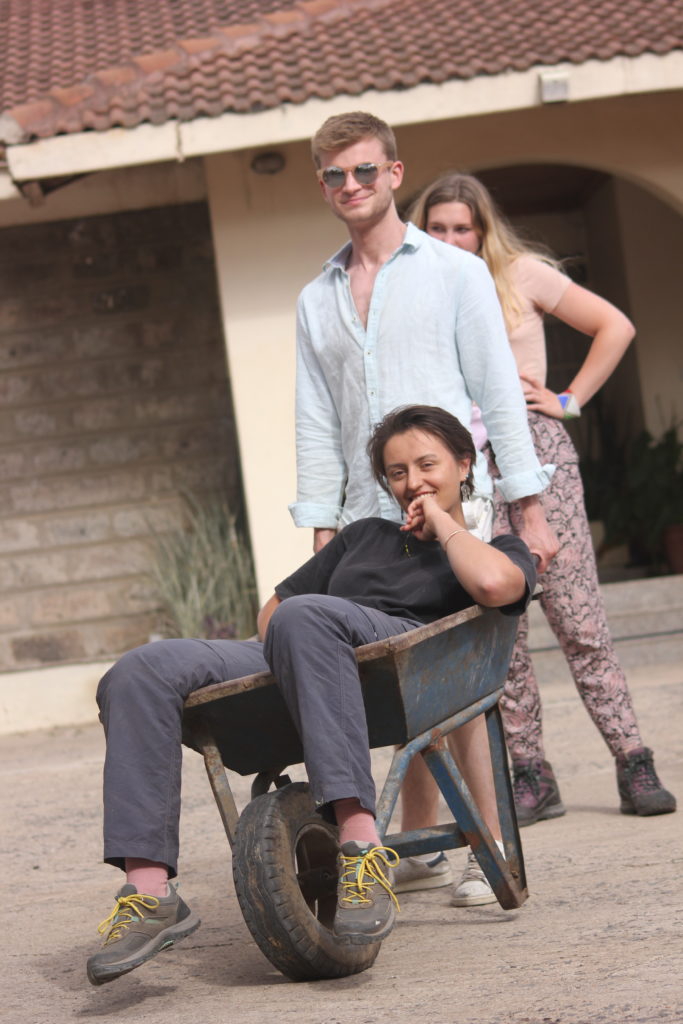

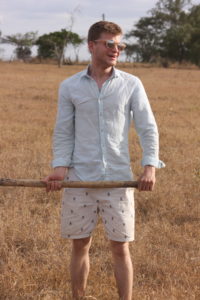
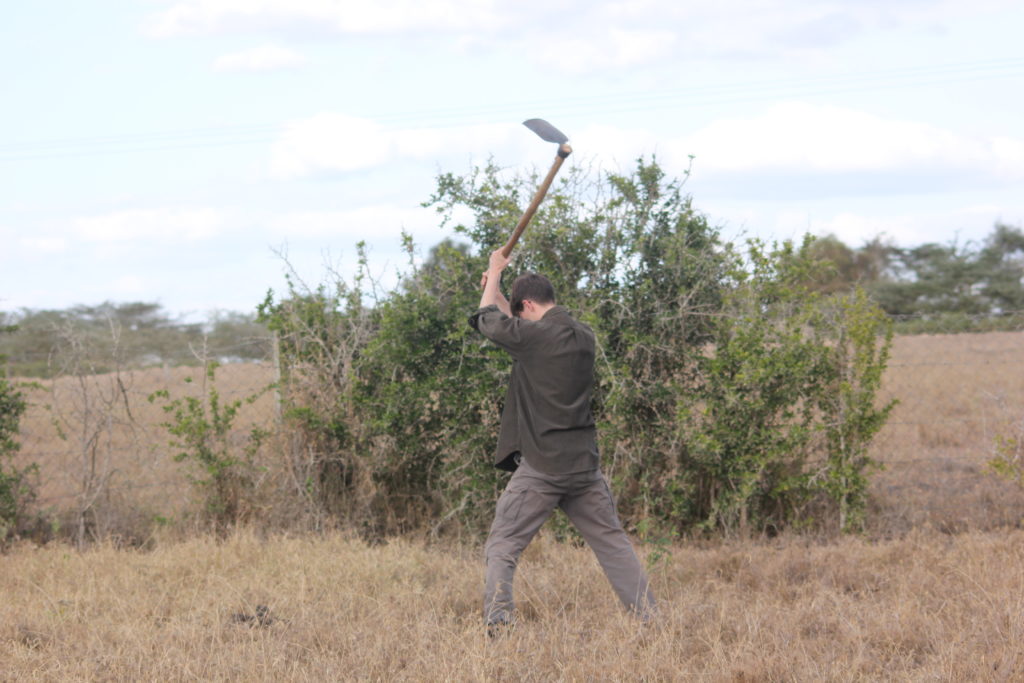
In the end, dispute our many tribulations, we planted around twenty trees and felt a sense of satisfaction at having done some straightforward work with visible results. The acacia seedlings lay snugly under their layer of dirt, ready to grow tall and play their part in the ecosystem of the ranch. We collapsed around the table in Michael’s house and exchanged drowsy conversation over buttered bread and milky Kenyan tea. The final slices disappeared with alarming rapidity, and we cast our eyes around in ravenous panic, sure that we still had another loaf. Solomon noticed our distress, and gave us a sly grin.
“You guys were looking for the bread?” He patted his stomach. “Here it is.”
Feeling sufficiently revived, we said our goodbyes to the ranch and bundled into the jeep, ready to get back to the camp and get some rest. Oh, how little did we know of what the night still held. On our way out of the ranch, we spotted a lone sheep stranded outside of the safety of the perimeter fence, which caused some consternation. The sun was setting, and Michael suspected that hyenas were on the prowl. After a quick phone call, a couple of men showed up on a motorbike to usher the sheep back home. Not a moment too soon – minutes later, we passed a small group of spotted hyenas, looking decidedly peeved at having been denied an easy meal.
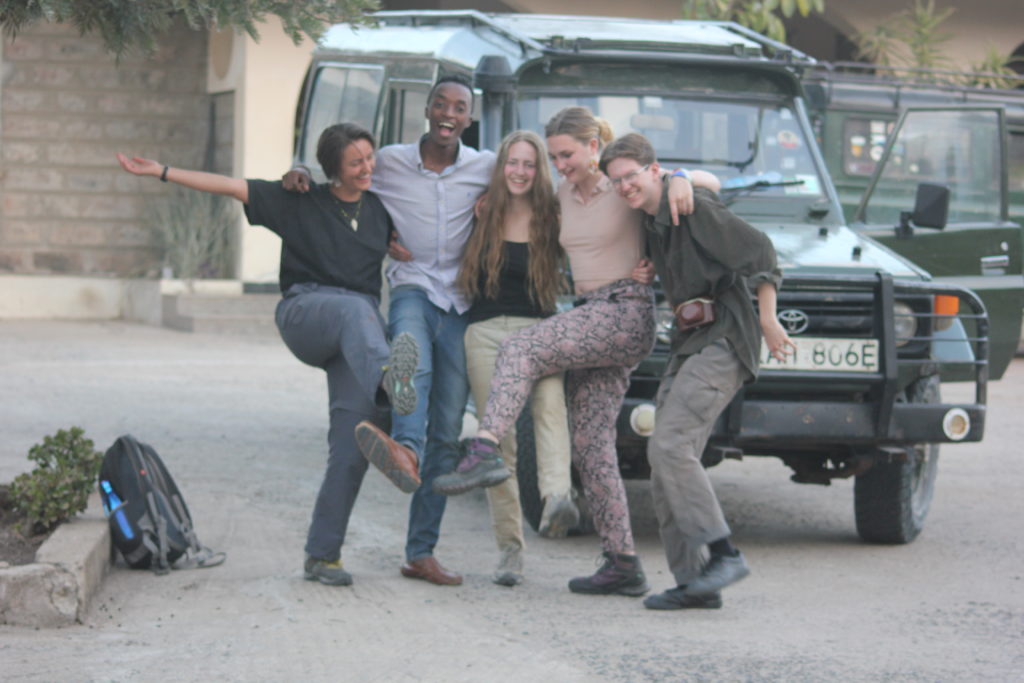


We had been expecting to head straight back to Kiboko Camp at this point, but Michael had a final surprise in store for us. I was starting to nod off in the car, when I felt a sudden lurching in my stomach, indicating that the horizontal plane underneath me was shifting in a worryingly vertical direction. I opened my eyes, and blanched; we were on top of a massive, ramp-shaped mound of earth, around 40 feet high but barely wider than our vehicle. Quite how we’d wound up on top of it, I wasn’t sure, but Michael looked very pleased.
“I built this,” he announced. “Well, my father and I did. I use it as an observation point, to scan for wildlife – or poachers.” Once we got over our initial terror, we agreed that it was very impressive, and the view was indeed spectacular. Vast swathes of open plains unfolded around us, studded in the distance with the winking lights of Nairobi. After taking in our surroundings, and hearing a little more about how the structure beneath our feet came to be, we decided it was getting late and it was time to be on our way.

The jeep started reversing down the slope with all the elegance of a rhinoceros on a tricycle, and I realised a few seconds too late that something had gone very wrong. Glancing out of the window and immediately regretting it, I was met with a teetering drop over which we had somehow become suspended. In a tense but steady voice, Michael instructed us all to get out of the car. We were quick to oblige. Once we were out, we took in the full extent of the mess we had got ourselves into. While reversing, the unwieldy bulk of Jeeves the jeep had gradually drifted sideways until we were moving on a diagonal, which would have sent us flying off the side of the ramp had Michael not hit the brakes in time. We were all safe, now that we were out of the vehicle, but the same could not be said for Jeeves, who was jutting awkwardly off the edge of the ramp with one wheel unsupported and his rear end pointed in a decidedly hazardous direction.
We tried not to panic, and took stock of our options. One way or another, we were going to have to get that jeep back down onto solid ground – the question was how. In order to turn the jeep around sufficiently to reverse in a straight line down the slope, Michael would first have to drive it back up the slope to give himself some space to steer. The only problem was, the jeep was at such an incline that it would be impossible to gain enough momentum to drive uphill, not to mention the fact that one of the wheels wasn’t even in contact with anything.
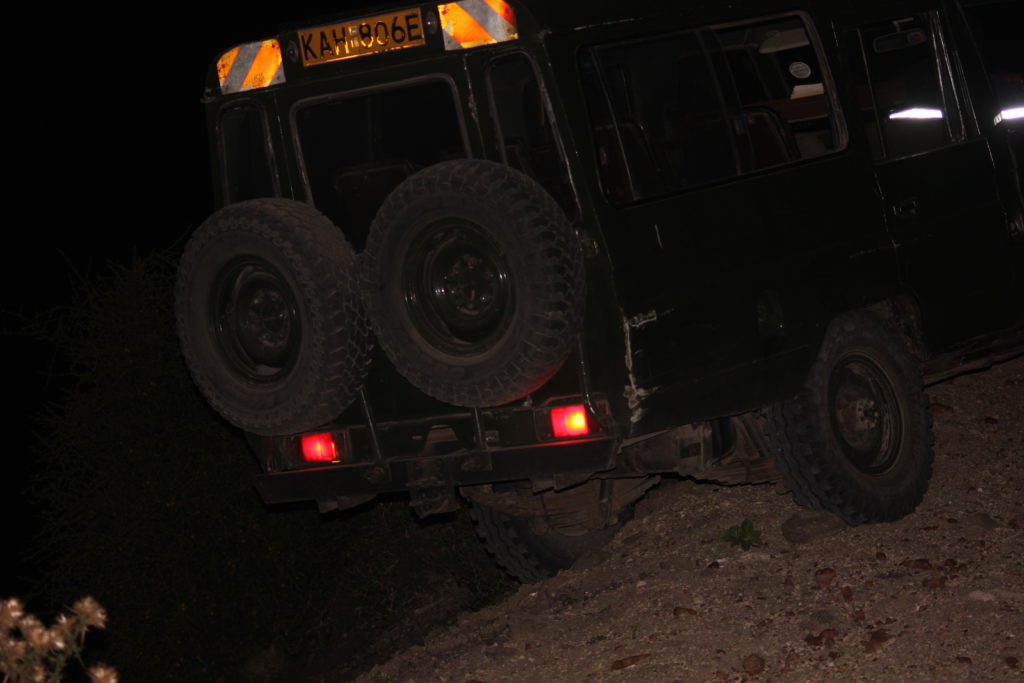
So, in tried and tested fashion, we opted for the approach we had favoured last time Jeeves got stuck in a compromising position, and gathered rocks to wedge under the wheels. Once they were all in place, Michael floored the pedal and valiantly attempted to convince our cantankerous four-wheel deathtrap to climb back up the slope. Jeeves bellowed and shook and spurted foul-smelling fumes from various metallic orifices, but inspection of the rocks revealed that we had barely moved more than a couple of inches.
Undeterred, we pressed on to Plan B: call the rangers and politely plead with them to rescue us. Once a team had confirmed that they were on their way, there was little for us to do other than sit and wait, so we made the best of our situation and indulged in some stargazing on top of the mound. The sky was dizzyingly clear, so thick with stars that they appeared to be arrayed in layers, some near and others deep in the distance. It was a beautiful view, and made for a welcome distraction as we attempted to ignore the unidentified growling sounds that resonated through the night around us.
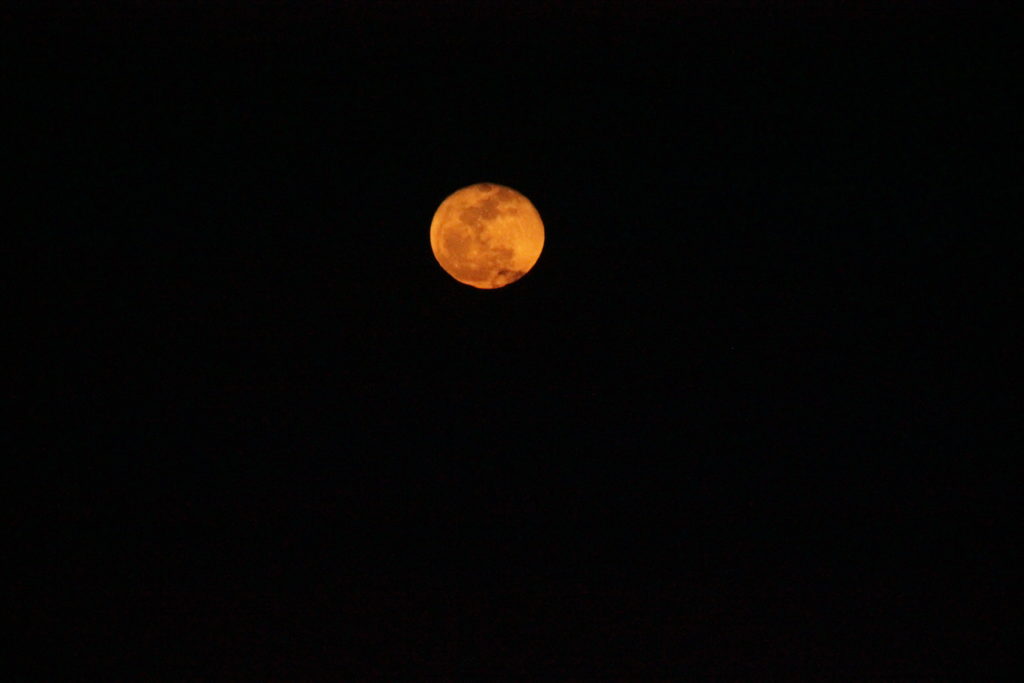
At last, the rangers arrived, no doubt rolling their eyes at our incompetence but nonetheless happy to help. They attached a thick rope to the big metal bar on the front of the jeep, which they then used to assist in hauling it up the slope with their own car. Things were progressing smoothly, as Jeeves finally got the momentum he needed and looked sure to make it to the top, when it all suddenly fell apart in dramatic and literal fashion. A resonant snapping sound, followed by a dull thud, informed us that the metal bar had buckled under pressure and come flying off the front of the jeep. Such is the power of gravity – something had to give, and if the rope wasn’t going to snap then the car would have to take the hit.
Everyone stood there for a moment, blinking in disbelief. Once we had all registered what had happened, the rangers calmly untied the rope and carried the bar off to one side. (What do Kenyans make their ropes out of, anyway? This stuff must be indestructible!) While this was happening, Michael sheepishly rang up his father to ask for assistance. I couldn’t quite understand why one more person would make any difference, until he arrived. We heard him before we saw him, the thundering of a powerful engine accompanied by the sound of… dogs? Then he emerged from the darkness, a shining saviour astride a huge blue tractor. The cavalry was here. His faithful pack of hounds barked and snapped and danced around him, weaving in and out of the tractor’s wheels without any sign of fear. It was a singularly surreal image, as though we had stumbled into the path of a medieval lord out on a wild hunt – except his choice of steed was a tractor.
There was to be no more nonsense. The tractor and jeep were fastened together with the rope, and in a series of delicate manoeuvres the rescue was at last brought to completion. We were so giddy with relief, not to mention tiredness, that I barely remember what happened next. I’m not even sure if we had the chance to thank Michael’s father before he faded back into the night, engine throbbing, dogs in tow. Michael apologised profusely and repeatedly, while we assured him through fits of manic laughter that he shouldn’t worry, and if nothing else it had made for a memorable experience. It only occurred to me afterwards that it probably would have made more sense to park at the bottom of the mound, and just walk up on foot – but what fun would that have been?
